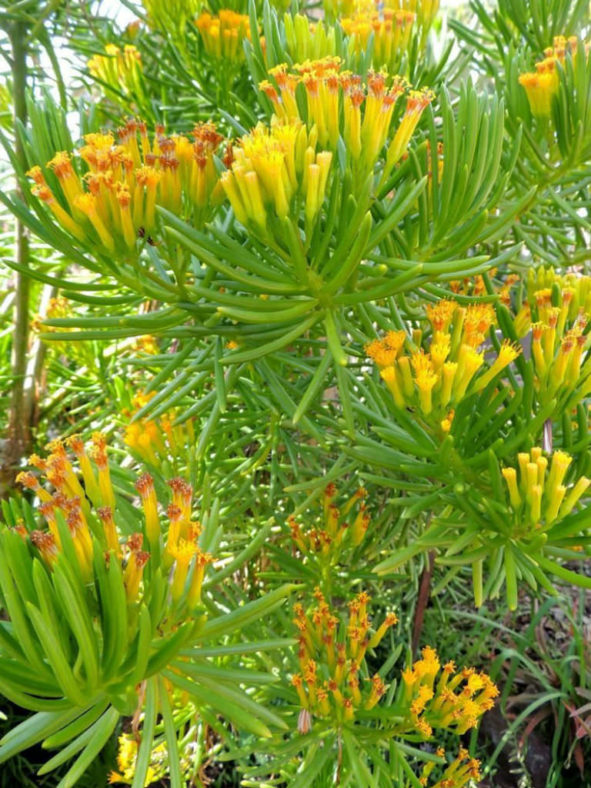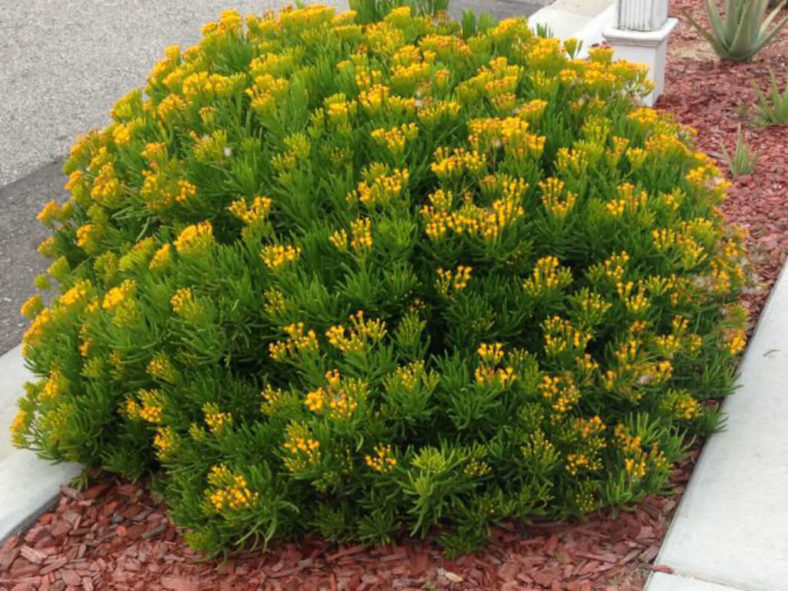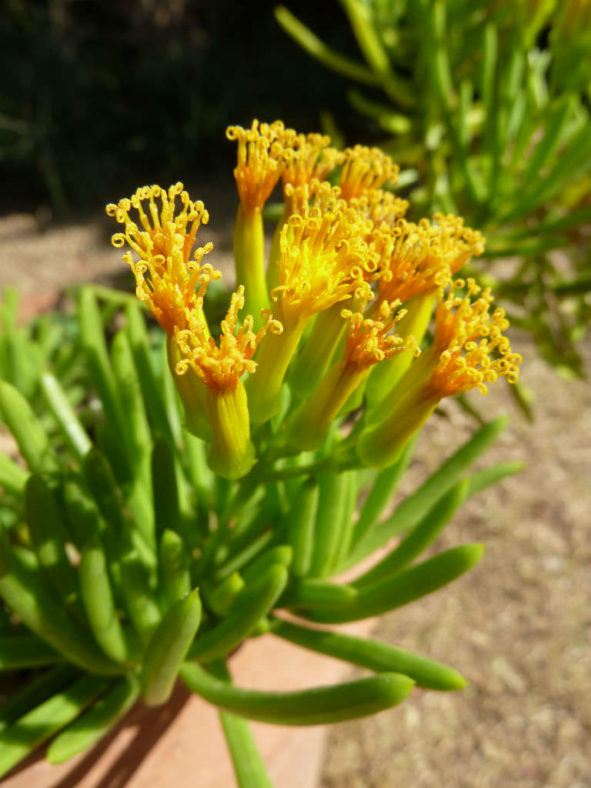Scientific Name
Senecio barbertonicus Klatt
Common Name(s)
Succulent Bush Senecio, Barberton Senecio, Barberton Groundsel
Synonym(s)
Kleinia barbertonica
Scientific Classification
Family: Asteraceae
Subfamily: Asteroideae
Tribe: Senecioneae
Subtribe: Senecioninae
Genus: Senecio
Etymology
The specific epithet "barbertonicus" (pronounced "bar-ber-TON-ee-kus") means "belonging to or derived from Barberton" and refers to Barberton, a town in the Mpumalanga province of South Africa, where Ernest Edward Galpin collected the first specimen of this species between 1889 and 1892.
Origin
Senecio barbertonicus is native to South Africa.
Description
Senecio barbertonicus is a succulent shrub with light green, cylindrical leaves densely packed around the branches. It can grow up to 6 feet (1.8 m) tall and nearly as wide. The leaves can measure up to 4 inches (10 cm) long and 0.4 inches (1 cm) in diameter.
The bright yellow flowers, which can reach a length of 3 inches (7.5 cm) and a diameter of 0.4 inches (1 cm), appear in late fall and winter.

How to Grow and Care for Senecio barbertonicus
Hardiness: USDA hardiness zone 9b to 11b: from 25°F (-3.9°C) to 50°F (10°C).
Established plants are extremely drought-tolerant. They need some water during the summer, but do not leave the soil wet for prolonged periods. Allow the soil to dry out between waterings in winter, when plants are somewhat dormant. Since they are growing in sandy soil, the plants need to be replenished with nutrients. Fertilize annually, but lightly. Too much fertilizer application can lead to excessive leggy growth.
Taller varieties can get floppy. In early spring, you can prune them back to a firm stem and even root the cuttings.
Plants can be divided or repotted in early spring. If you are growing them in containers, they enjoy spending the summer outdoors. Wait until there is no danger of frost and move them back indoors in the fall.
Few pests bother Senecio. They can occasionally be affected by scale and mealybugs.
See more at How to Grow and Care for Senecio.
Links
- Back to genus Senecio
- Succupedia: Browse succulents by Scientific Name, Common Name, Genus, Family, USDA Hardiness Zone, Origin, or cacti by Genus
Photo Gallery
Click on a photo to see a larger version.


